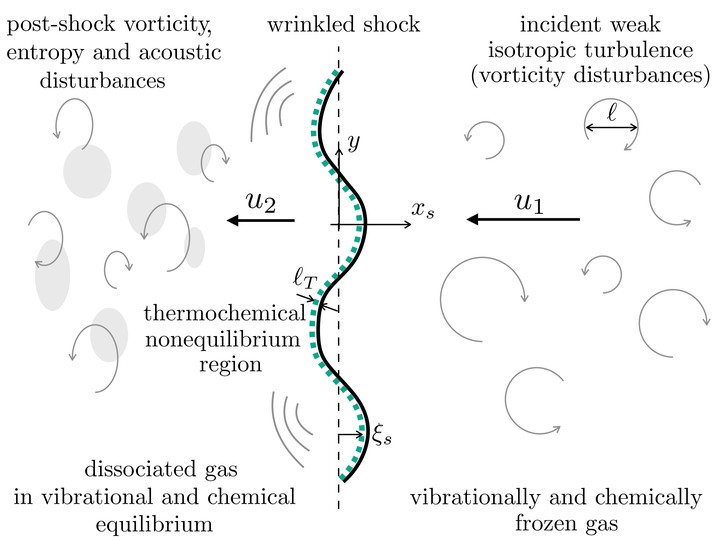Thermochemical effects of gas dissociation and vibrational excitation on hypersonic shock waves interacting with weak turbulence

Abstract
The interaction between a weakly turbulent free stream and a hypersonic shock wave is investigated theoretically by using linear interaction analysis (LIA). The formulation is developed in the limit in which the thickness of the thermochemical nonequilibrium region downstream of the shock, where relaxation toward vibrational and chemical equilibrium occurs, is assumed to be much smaller than the characteristic size of the shock wrinkles caused by turbulence. Modified Rankine-Hugoniot jump conditions that account for dissociation and vibrational excitation are derived and employed in a Fourier analysis of a shock interacting with three-dimensional isotropic vortical disturbances. This provides the modal structure of the post-shock gas arising from the interaction, along with integral formulas for the amplification of enstrophy, concentration variance, turbulent kinetic energy (TKE) and turbulence intensity across the shock. Besides confirming known endothermic effects of dissociation and vibrational excitation in decreasing the mean post-shock temperature and velocity, these LIA results indicate that the enstrophy, anisotropy, intensity, and TKE of the fluctuations are much more amplified through the shock than in the thermochemically frozen case. Additionally, the turbulent Reynolds number is amplified across the shock at hypersonic Mach numbers in the presence of dissociation and vibrational excitation, as opposed to the attenuation observed in the themochemically frozen case. These results suggest that turbulence may persist and get augmented across hypersonic shock waves despite the high post-shock temperatures.